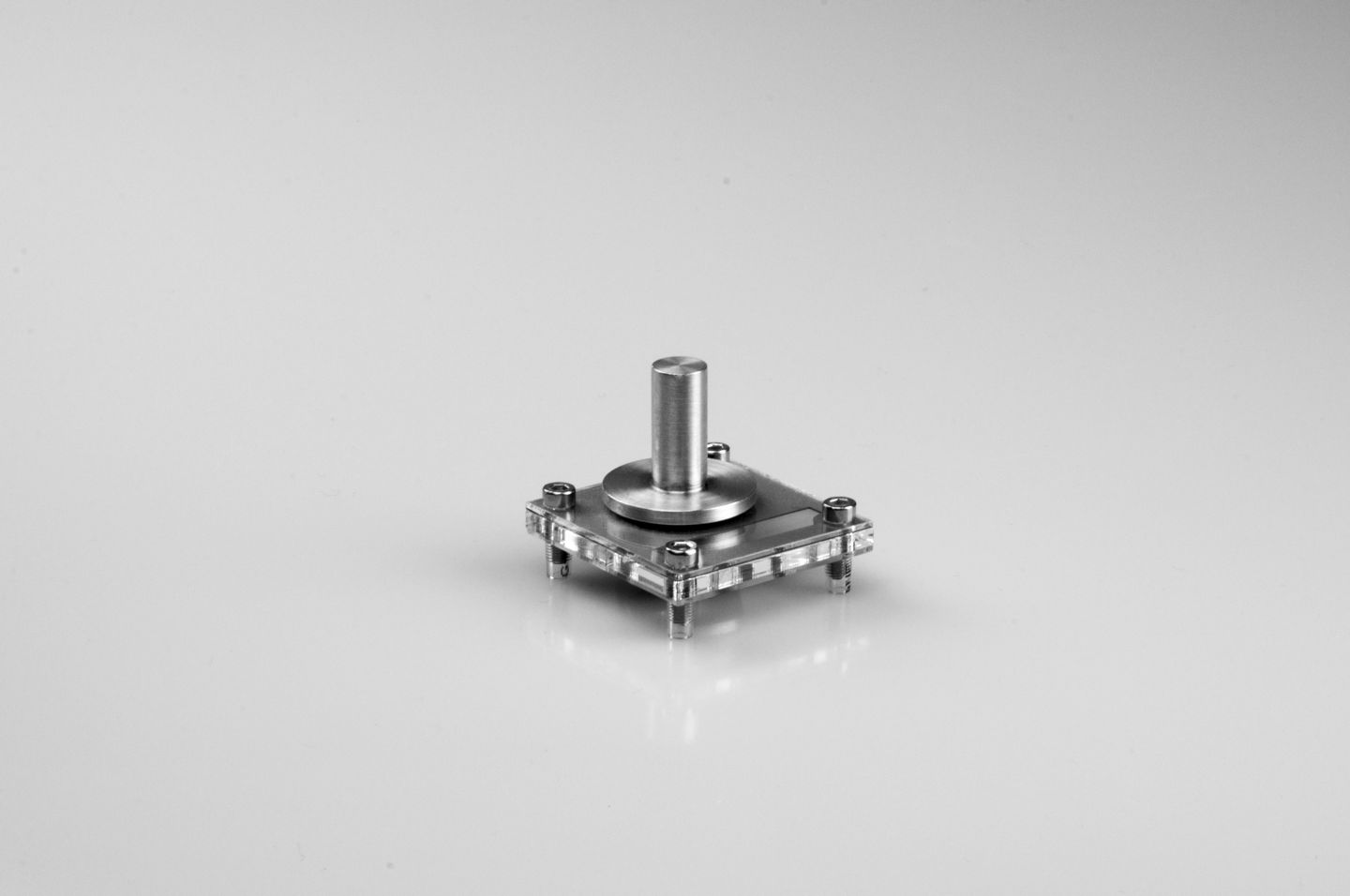iPads were toted as going to change the future of music creating and performance. So far, that hasn’t been the case. I’ve seen plenty of people use them on stage but they almost always have another controller on stage. As a musician, there is just something to touching a knob and letting your muscle memory kick in. That’s when you see practice and skill truly take over.
As an example, take the Glitch Mob’s new Blade setups, they each have 4 iPads and then one MPD 24. The iPads are there to play their lines and some XY filter controls while the MPDs give them some faders and knobs to easily grab, twist, throw and take hold of.
Enter Modulares Interface
Florian has come up with a best of both worlds approach. His software runs on the iPad and let’s you configure your modules, you then drop each module onto the screen where the modules snap into place via magnets and control their specific region including haptic feedback.
Here’s what Florian has to say about his work:
Multi-touch devices like the iPad have become more and more popular over the last couple of years. Nowadays they are not only used for browsing and sending e-mails, but also as a medium for new fields of applications. One particular thing of multi-touch devices is in need of improvement: It is the lack of haptic feedback, which makes it difficult to set parameters precisely.
Regarding to this problem the project has been developed to provide a variety of physical controllers. These controllers expand the usage of a touch device with a haptic feedback while adjusting parameters. By using magnets, the different controllers can easily be arranged onto the iPad. A modular interface appears, which uses a given device just like the iPad.The system contains three different parts:
– The physical controllers (button, slider and knob), made out of conductive aluminium to pass on the electrical discharge of the human skin.– A frame, made out of aluminium and plastic, in which the iPad is inserted. The edge of the frame has embedded magnets, making it possible to position the controller precisely and easily.
– The software, running as an app on the iPad. It organizes the control elements and sends the parameters to the corresponding software, which is controlled by the modular interface.
The controllers are made of aluminium because of its property to forward electrical charge. Therefore, the electrical discharge of the human skin can be transmitted to the touchscreen of the iPad.
To prevent the control devices from screeching the display, a piece of conductive foam is used on the end of each controller.
An app programmed in Cinder/C++ is running on the iPad. It manages the individual setup of the controllers and reads their input on the touchscreen. The app then transfers the information via OSC to a connected application.






